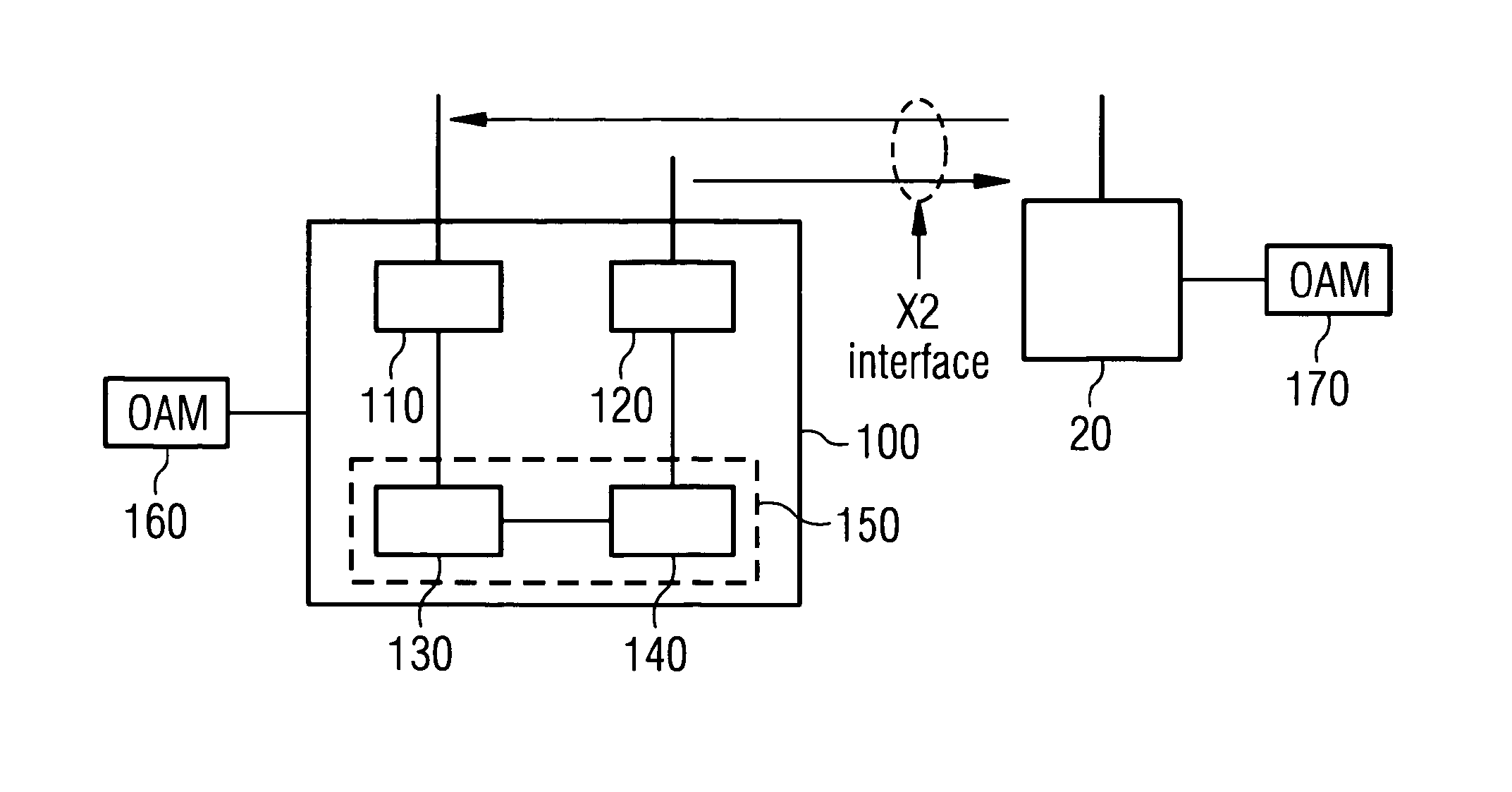Method for providing the Identity of an Apparatus in a Communications Network and Apparatus Thereof
a technology of communication network and identity, applied in the field of mobile telecommunication networks, can solve problems such as bad radio conditions, achieve the effects of reducing average radio-transmission power, enhancing cell capacity, and long battery li
- Summary
- Abstract
- Description
- Claims
- Application Information
AI Technical Summary
Benefits of technology
Problems solved by technology
Method used
Image
Examples
Embodiment Construction
[0020]FIG. 1 shows a typical deployment of RNs in a cell 1 of a communications network 1000. In order to aid the understanding of the proposed invention only one exemplary cell 1 has been depicted. It is of course well known that in communications network 1000 where numerous UEs can be present, more than one cell 1 will exist. Communications network 1000 comprises an access node 100 providing coverage in cell 1 and access to a core network (CN) which is not illustrated. Within cell 1, RNs 20 are also present and allow for the coverage of cell 1 to be extended via the creation of RN cells 2. UEs 10 that are present within cell 1 can either be connected directly to access node 100 over an access link 5 or be connected to an RN 20 also over an access link 5. RNs 20 are in turn connected to access node 100 over a communication link 6 namely a relay link or equivalently in the case of a L3 type of relay this is also named a backhaul link.
[0021]Communications network 1000, can be an LTE o...
PUM
 Login to View More
Login to View More Abstract
Description
Claims
Application Information
 Login to View More
Login to View More - R&D
- Intellectual Property
- Life Sciences
- Materials
- Tech Scout
- Unparalleled Data Quality
- Higher Quality Content
- 60% Fewer Hallucinations
Browse by: Latest US Patents, China's latest patents, Technical Efficacy Thesaurus, Application Domain, Technology Topic, Popular Technical Reports.
© 2025 PatSnap. All rights reserved.Legal|Privacy policy|Modern Slavery Act Transparency Statement|Sitemap|About US| Contact US: help@patsnap.com



